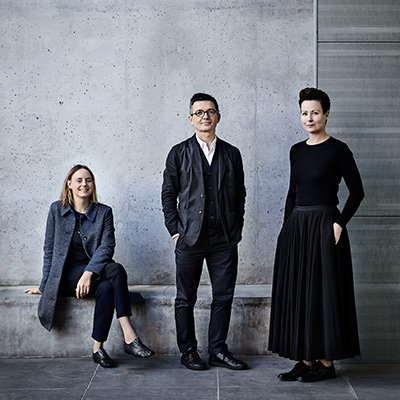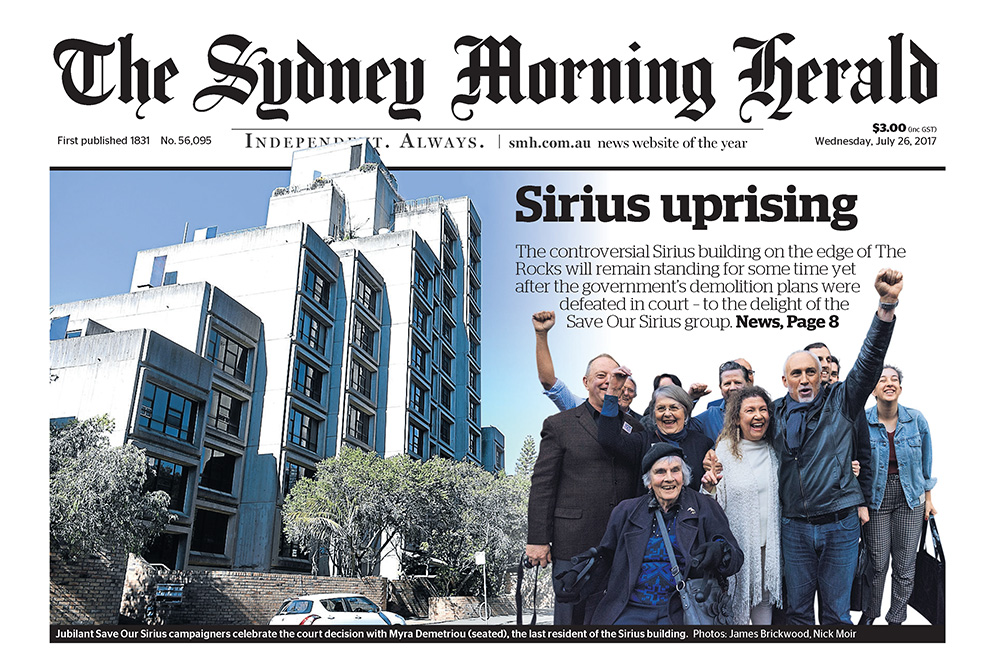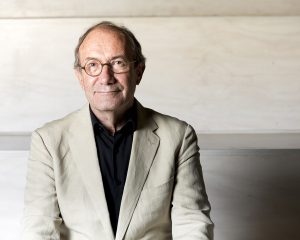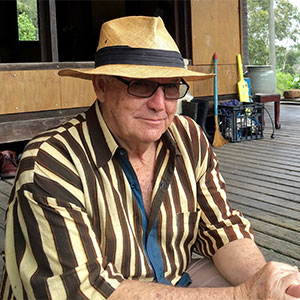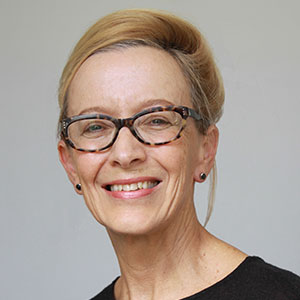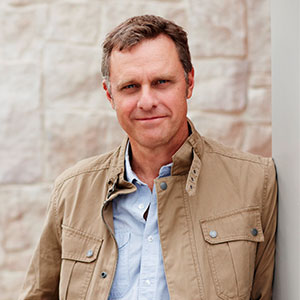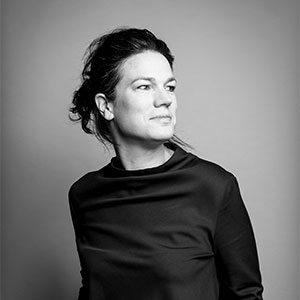September 15, 2017
The competition for recognition as the best in Australian architecture has reached its most fierce with a record 983 entries being received across 14 categories in this year’s Australian Institute of Architects’ National Architecture Awards, the largest of its kind in the Southern Hemisphere.
Following the Chapter Architecture Awards presentations earlier in the year, 205 entries were eligible for national judging and the jury has today revealed their shortlist of 72 projects ahead of the prestigious awards ceremony on Thursday 2 November.
Jury chair and Immediate Past President Ken Maher said the entries exemplified ‘the positive impact architecture has on our cities, towns and landscapes. Of course, the exceptional projects we visited represent only a small part of this contribution, much of which goes unrecognised.
‘Reflecting on the state of architecture as observed from the visits, we were heartened by the maturity, creativity and accomplishment demonstrated by the profession across the board, from well-recognised practitioners to emerging practices and younger architects,’ Maher said.
‘The remarkable testimonies from clients were touching – many revealed that they had gained a true understanding of the value of architecture through undertaking their projects.’
Keeping pace with the recent apartment construction boom, particularly along the eastern seaboard, there was a record number of projects in the Residential Architecture – Multiple Housing category on the shortlist.
A large number of educational projects were also selected by the jury for ‘inventive design thinking that has expanded the pedagogic and experiential agendas’.
Maher was joined on the jury by Mel Bright, Lawrence Nield, Sue Dugdale and Peter Maddison. Launching on World Architecture Day, Monday 2 October, the annual People’s Choice Award will once again give members of the public the opportunity to vote for their favourite residential project from the shortlist.
The 2017 winners of the National Architecture Awards will be announced at Albert Hall in Canberra on Thursday 2 November. Tickets and further information available at architecture.com.au/awards-2017
Full shortlist:
Commercial Architecture (5)
NewActon Nishi by Fender Katsalidis Architects (ACT)
Sydney Processing Centre by Genton Architecture (NSW)
TarraWarra Cellar Door by Kerstin Thompson Architects (Vic)
The EY Centre by fjmt (NSW)
Willinga Park by Cox Architecture (ACT)
Educational Architecture (7)
Albert Park College Environmental Arts Hub by Six Degrees Architects (Vic)
Arts West, University of Melbourne by ARM + Architectus (Vic)
East Sydney Early Learning Centre by Andrew Burges Architects in association with the City of Sydney (NSW)
Mt Alvernia College Anthony and La Verna Buildings by m3architecture (Qld)
St Joseph’s Nudgee College Hanly Learning Centre by m3architecture (Qld)
The Grimwade Centre For Cultural Materials Conservation – The University of Melbourne by Jackson Clements Burrows Architects (Vic)
UQ Forgan Smith Building – TC Beirne School of Law and Walter Harrison Library Refurbishment by BVN (Qld)
Enduring Architecture (2)
17 Wylde Street by Aaron M Bolot (NSW)
University South Lawn Underground Car Park by Loder & Bayly in association with Harris, Lange and Associates (Vic)
Heritage (5)
100 Harris Street by SJB (NSW)
Albert Park College Environmental Arts Hub by Six Degrees Architects (Vic)
Captain Kelly’s Cottage by John Wardle Architects (Tas)
Embassy of Sweden by Guida Moseley Brown Architects (ACT)
Juanita Nielsen Community Centre by Neeson Murcutt Architects Pty Ltd in association with City of Sydney (NSW)
Interior Architecture (5)
Canberra Airport – International by Guida Moseley Brown Architects (ACT)
Indigo Slam by Smart Design Studio (NSW)
Slack Melbourne Office by Breathe Architecture (Vic)
The Gipson Commons, St Michael’s Grammar School by Architectus (Vic)
UQ Forgan Smith Building – TC Beirne School of Law and Walter Harrison Library Refurbishment by BVN (Qld)
International Architecture (3)
Amanemu by Kerry Hill Architects (Japan)
International Centre for Interdisciplinary Science and Education (ICISE) by Studio Milou Singapore (Vietnam)
SkyVille @ Dawson by WOHA (Singapore)
Public Architecture (7)
Act for Kids Child and Family Centre of Excellence by m3architecture (Qld)
East Pilbara Arts Centre by Officer Woods Architects (WA)
Juanita Nielsen Community Centre by Neeson Murcutt Architects Pty Ltd in association with City of Sydney (NSW)
Orange Regional Museum by Crone (NSW)
Sunshine Coast University Hospital by Architectus Brisbane and HDR Rice Daubney as Sunshine Coast Architects (Qld)
The Globe by Brian Hooper Architect and m3architecture (architects in association) (Qld)
Victorian Comprehensive Cancer Centre by sthDI+MCR (Vic)
Residential Architecture – Houses (Alterations & Additions) (7)
Annandale House by Welsh + Major Architects (NSW)
Burleigh Street House by ME (Qld)
Captain Kelly’s Cottage by John Wardle Architects (Tas)
Dornoch Terrace House by James Russell Architect (Qld)
Jac by panovscott (NSW)
Little Sister’s House by Candalepas Associates (NSW)
Sorrento House by Figureground Architecture (Vic)
Residential Architecture – Houses (New) (8)
Cape Tribulation House by m3architecture (Qld)
Coogee House by Chenchow Little (NSW)
D’Entrecasteaux House by room11 (Tas)
Dark Horse by Architecture Architecture (Vic)
Mitti Street House by James Russell Architect (Qld)
Rose House by Baracco+Wright Architects (Vic)
Tamarama House by Durbach Block Jaggers Architects (NSW)
Tent House by Sparks Architects (Qld)
Residential Architecture – Multiple Housing (7)
88 Angel St by Steele Associates Architects (NSW)
Crown 515 by Smart Design Studio (NSW)
President Avenue by Candalepas Associates (NSW)
RMIT Bundoora West Student Accommodation by Richard Middleton Architects (RMA) (Vic)
Solis: Little Bay Apartments by Fox Johnston (NSW)
St Joseph’s Nudgee College Bathersby Boarding Village by m3architecture (Qld)
Tropology for DHA by Troppo Architects (NT)
Small Project Architecture (4)
Lizard Log Amenities by CHROFI (NSW)
North Bondi Amenities by Sam Crawford Architects with Lymesmith (NSW)
Studio for Indigo Jungle by Marc&Co (Qld)
The Piano Mill by Conrad Gargett (Qld)
Sustainable Architecture (6)
88 Angel St by Steele Associates Architects (NSW)
Central Park Sydney by Tzannes and Cox Richardson and Forster + Partners (NSW)
Gen Y Demonstration Housing Project by David Barr Architect (WA)
Mt Alvernia College Anthony and La Verna Buildings by m3architecture (Qld)
Sunnybanks House by Core Collective Architects (Tas)
South East Water by BVN (Vic)
Urban Design (4)
Central Park Sydney by Tzannes and Cox Richardson and Foster + Partners (NSW)
Frank Bartlett Library and Moe Service Centre by fjmt (Vic)
Kensington Street Precinct by Tonkin Zulaikha Greer Architects (NSW)
The Goods Line by ASPECT Studios with CHROFI (NSW)
COLORBOND® Award for Steel Architecture (2)
Arts West, University of Melbourne by ARM + Architectus (Vic)
Lizard Log Amenities by CHROFI (NSW)
View the gallery of shortlisted projects here.


